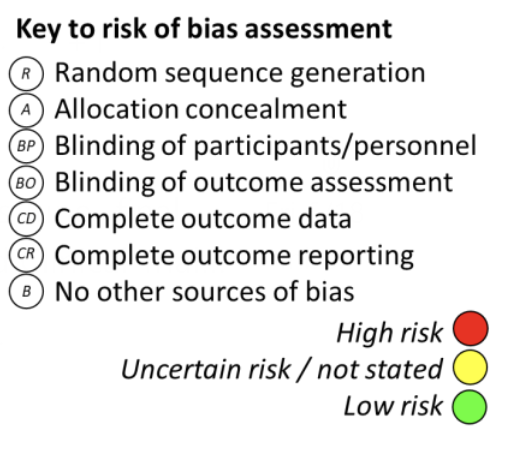ISN Academy: Glomerular Diseases
Interfering with interferon: encouraging results for a new treatment option in proliferative lupus nephritis
Phase II randomised trial of type I interferon inhibitor anifrolumab in patients with active lupus nephritis
Jayne et al. An Rheum Dis. 2022.
Summary: In this double-blinded trial 147 patients with active lupus nephritis class III/IV (+/-V) were randomly assigned to receive 48 weeks of anifrolumab (human monoclonal antibody to type 1 interferon receptor) at a standard dose of 300mg IV monthly, or at a standard dose with three initial loading doses of 900mg IV, or placebo. Most patients (94.5%) demonstrated high gene signatures for the type 1 interferon gene. Background immunosuppressive therapy for all patients included a single IV methylprednisolone 500mg pulse, oral steroids tapered to ≤10mg/day by week 12 and ≤7.5mg/day by week 24, and mycophenolate mofetil 2g/day. There was no significant difference in the primary outcome of improvement of the 24-hour urine protein-creatinine ratio (UPCR) for the combined anifrolumab groups compared to the placebo group (69% vs 70%) at week 52. The proportion of patients who attained complete renal response at week 52, defined as 24-hour UPCR ≤0.7 mg/mg, eGFR ≥60mL/min/1.73m2 or no decrease ≥20% from baseline, was highest among the group receiving anifrolumab loading doses (45.5%) compared to 31.1% with placebo, although it was lowest among those receiving standard anifrolumab doses at 16.3%. Sustained oral steroid reduction was achieved in 55.6% of patients with the higher anifrolumab dose, while in standard regime and placebo proportions of patients were almost the same at 35.5% and 33.3% respectively. The loading dose regimen also showed improved pharmacokinetics. Adverse effects were more common in the combined anifrolumab arms (93.8%) compared with the placebo (89.8%) group, including higher rates of herpes zoster infections, urinary tract infections and influenza.
Comment: Overexpression of a type I interferon gene signature is common among people with SLE and is associated with active lupus nephritis and treatment failure, and may provide an opportunity for intervention though IFN inhibition with anifrolumab. The TULIP-1 and TULIP-2 trials demonstrated some clinical benefit of anifrolumab among those with SLE, but excluded those with severe active lupus nephritis. The present study sought to demonstrate the efficacy and safety of two dose regimens in patients with proliferative LN. While the primary end point of the combined anifrolumab treatment arms was unmet, the loading dose regimen shows promise in improving renal response rates. A planned phase III study (NCT05138133) may help to better establish the role of anifrolumab in managing lupus nephritis.
ISN Academy: Chronic Kidney Disease
Probiotics with a low protein diet may reduce proteinuria, uremic toxins and pro-atherogenic mediators in chronic kidney disease
Probiotics-supplemented low-protein diet for microbiota modulation in patients with advanced chronic kidney disease (ProLowCKD): results from a placebo-controlled randomized trial
De Mauri et al. Nutrients. 2022.
Summary: Sixty individuals with chronic kidney disease (CKD; with eGFR <25mL/min/1.73m2 but not on dialysis) in a single centre were given dietary recommendations including a low protein diet (LPD) for 2 months, with a protein intake of 0.6g/Kg of body weight per day, as well as prebiotic supplements, followed by randomisation to either a placebo or to a probiotic formulation for two months. The probiotic was Bifidobacterium longum and Lactobacillus reuteri taken twice daily for 1 month and then daily for 2 months. Forty-seven participants completed the evaluation. After the two months of LPD, there was a reduction in blood urea nitrogen, total cholesterol and triglycerides. By trial conclusion, the probiotics were associated with a trend towards reduction in indoxyl-sulphate (a microbiota-derived uremic toxin) and lipoprotein-associated phospholipase A2 (a chemotactic enzyme associated with adverse cardiovascular effects), although this did not reach statistical significance. In comparison, participants in the placebo group showed an average increase in these markers. The probiotic group also demonstrated reduced proteinuria, stable LDL cholesterol levels (compared to increased levels with placebo) and a reduction of the dose of antihypertensive drugs and loop diuretics through an apparent improvement in fluid status.
Comment: CKD can be associated with an altered intestinal microbiota, which may represent a non-traditional risk factor for cardiovascular disease involving the generation of microbiota-derived uremic toxins, pro-atherogenic mediators, and other alterations of gut metabolism and permeability. This small study demonstrates some encouraging trends in markers of microbiota-mediated dysfunction with probiotic use. Further studies are needed to determine whether these effects are statistically significant, whether they are sustainable in the long-term, and whether the intervention is associated with improvement in long-term clinical outcomes.
ISN Academy: Anemia, Iron and Trace Elements
Roxadustat is non-inferior to epoetin alfa for the treatment of anemia in dialysis patients
Roxadustat versus epoetin alfa for treating anemia in patients with chronic kidney disease on dialysis: results from the randomized phase 3 ROCKIES study
Fishbane et al. J Am Soc Nephrol.
Summary: The ROCKIES study was a phase 3 randomized open-label study investigating Roxadustat use among 2133 dialysis patients (89.1% hemodialysis, 10.8% peritoneal dialysis) who either had a hemoglobin (Hb) level <10g/dl while erythropoietin stimulating agent (ESA) naïve, or Hb level <12g/dl while on ESA treatment. Participants were randomized to oral Roxadustat three times weekly to maintain a Hb of 11 +/- 1g/dl, or parenteral epoetin alfa as per local guidelines. The primary noninferiority end point was a mean change from baseline in Hb averaged over weeks 28-52 of treatment. Roxadustat was found to be non-inferior to epoetin alfa (p<0.001) and was associated with a slightly higher mean increase in Hb from baseline with a difference of 0.09g/dl (95% CI 0.01-0.18, p=0.035 for superiority). In addition, Roxadustat was superior in those with an elevated high-sensitivity C-reactive protein (mean difference 0.20g/dl, 95% CI 0.04-0.36, p=0.012) and non-inferior for first red blood cell transfusion requirement. The mean monthly intravenous (IV) iron use from week 36 until the end of the study was lower with Roxadustat (58.71mg vs 91.37mg, p<0.001), oral iron use was similar (20.7% vs 18%), and there was a reduction in serum hepcidin from baseline to week 24 with Roxadustat treatment compared to epoetin alfa (mean difference – 28.21ng/ml, 95% CI -41.98 to -14.45). Overall adverse event (AE) rates were similar in both arms, however the Roxadustat group had higher rates of arteriovenous fistula (AVF) thrombosis (7.4% vs 5.4%), AVF site complications (5.4% vs 3.5%) and deep vein thrombosis (1.0% vs. 0.0%) events. Cardiac AE were similar for Roxadustat vs epoetin alfa (23.4% vs 26.3%).
Comment: Our understanding of the optimum management of anemia in dialysis patients continues to evolve. The development of ESAs dramatically reduced blood transfusion requirements in CKD, however at the cost of potential Page 3 of 4 adverse cardiovascular events, particularly with higher Hb targets. Roxadustat has had a rocky start, having initially been introduced as a revolutionary therapeutic alternative with significantly lower cardiovascular risks compared to ESAs. This analysis has since been retracted, and now shown to be non-inferior to epoetin alfa for both efficacy and safety. Regardless, there may be certain population groups that are likely to benefit from Roxadustat including those on peritoneal dialysis, as it is administered orally rather than parentally, and for those with high inflammatory states. There is also suggestion that it may enhance iron absorption and utilisation, and thus reduce IV iron requirements. The additional pill burden and potential for AVF complications, however, may make it less attractive for those on haemodialysis.
ISN Academy: Transplant
Intraoperative dexmedetomidine unsuccessful in reducing the effects of ischemic-reperfusion injury on kidney function after living donor kidney transplantation
Effects of intraoperative dexmedetomidine infusion on renal function in elective living donor kidney transplantation: a randomized controlled trial
Park et al. Can J Anaesth. 2022
Summary: One hundred and four patients undergoing elective living donor kidney transplantation were randomized to intra-operative dexmedetomidine or a 0.9% saline infusion. In both groups, intraoperative haemodynamic parameters and haemoglobin were monitored and supported with crystalloid solution, 5% albumin, norepinephrine infusion and blood transfusion as required to maintain adequate kidney perfusion. The primary outcome of a decrease in serum creatinine level by 0.3mg/dl with dexmedetomidine at day 7 post-procedure 7 was not observed, with a similar mean creatinine level seen in both groups (dexmedetomidine vs control: 1.11 [SD 0.87]mg/dL vs 1.06 [SD 0.73] mg/dL; mean difference, 0.05mg/dL; 95%CI -0.27 to 0.36; p=0.77) Similarly, kidney function at six months, incidence of delayed graft function and change in inflammasome-related markers were not significantly different between the two groups. The rates of biopsy proven acute rejection and dialysis requirement after the first 7 days were also comparable between groups.
Comment: Ischemia-reperfusion injury during kidney transplantation is associated with delayed graft function and acute rejection, which could affect the long-term graft survival depending on the severity of the injury. Dexmedetomidine, a highly selective alpha2 agonist with sympatholytic and anti-inflammatory effects, has been shown to reduce renal ischemia-reperfusion injury in experimental studies as well as the incidence of post-operative acute kidney injury in cardiac surgery patients. There is also some evidence of reduced incidence of delayed graft function when used in deceased donor kidney transplantation, without differences in eGFR or graft survival (Chen et al Clin Transl Sci 2020). This study was underpowered to detect the expected difference in serum creatinine concentration, possibly due to wider than expected variability of creatinine concentrations. The investigational agent may also have been under-dosed, as a decision was made to omit the loading dose to avoid delays to post-operative recovery, and this could have reduced its efficacy. There remains a strong need for ongoing research in the prevention and management of ischemia-reperfusion injury.
ISN Academy: General Nephrology
An oral carbapenem proves non-inferior to intravenous ertapenem in treating complicated urinary tract infections
Oral tebipenem pivoxil hydrobromide in complicated urinary tract infection
Eckburg et al. N Engl J Med. 2022
Summary: The study randomised 1372 patients hospitalised with a complicated urinary tract infection or acute pyelonephritis to receive oral tebipenem (600mg every 8 hours) or intravenous ertapenem (1g every 24 hours), each with a matched placebo, for 7-10 days or up to 14 days for patients with bacteraemia (11.5% of participants). An overall response (clinical cure and microbiological response) was seen for 58.8% of those receiving tebipenem compared to 61.6% of those receiving ertapenem (weighted difference -3.3 percentage points, 95%CI -9.7 to 3.2). Clinical cure of disease symptoms was seen in 93.1% compared to 93.6% with ertapenem, with similar rates among those with bacteraemia. Of the patients without urinary bacterial clearance, most had asymptomatic recurrent bacteriuria. Adverse event rates were similar to ertapenem (25.7% vs 25.6%) with mild diarrhoea and headache being the most common reported events. There was no increase in the risk of Clostridium difficile infection, or in post-treatment rectal swabs positivity for carbapenem-resistant Enterobacter ales (CRE).
Comment: Complicated urinary tract infections can result in long hospital admissions to deliver intravenous therapy, particularly with the rising incidence of extended-spectrum beta-lactamase (ESBL)-producing microbes where there may be a lack of oral options. Tebipenem has broad-spectrum activity including against ESBL and fluroquinoloneresistant Enterobacter ales. The results of this study suggest that tebipenem could prove an effective tool in the management of complicated urinary tract infections, and could therefore reduce the need for intravenous therapy. Of note, patients with creatinine clearance <30mL/min were excluded from the trial, and those with clearance 30- 50mL/min received a reduce tebipenem dose of 300mg every 8 hours.






